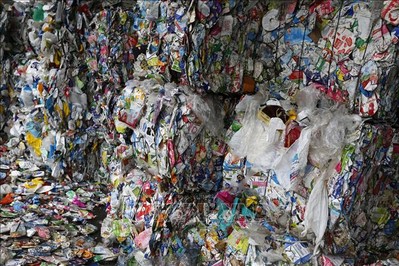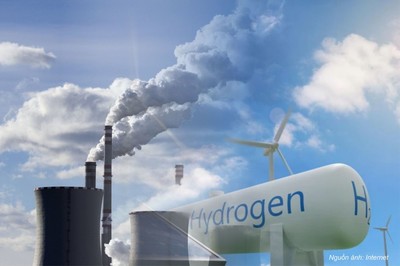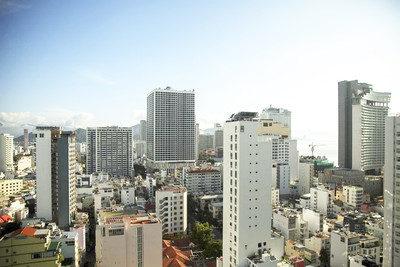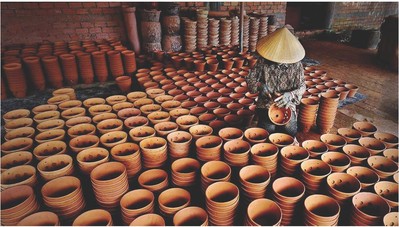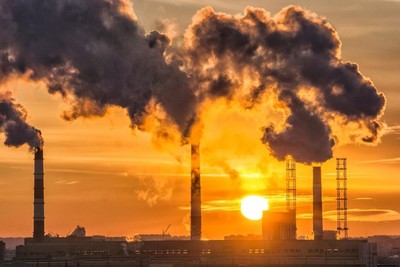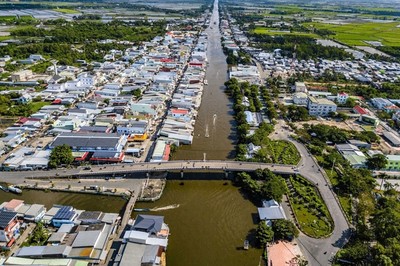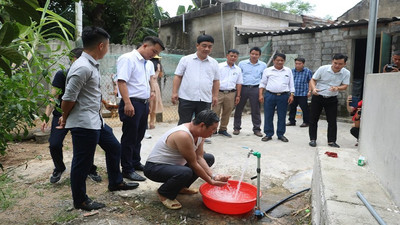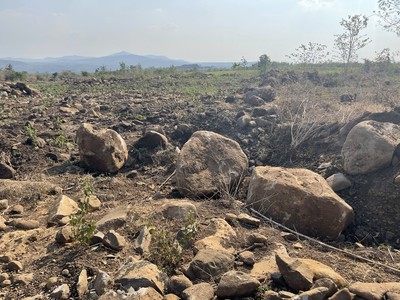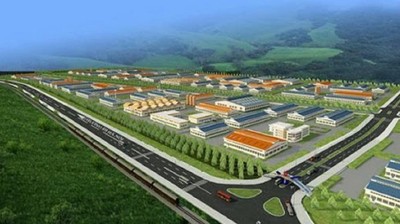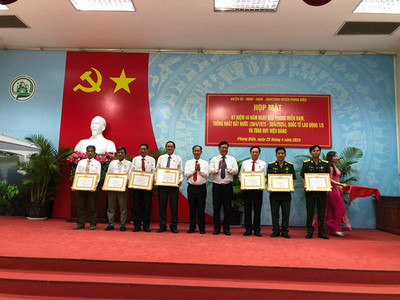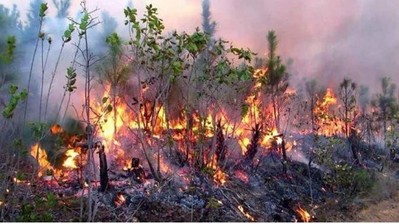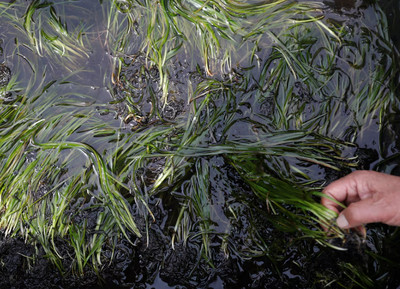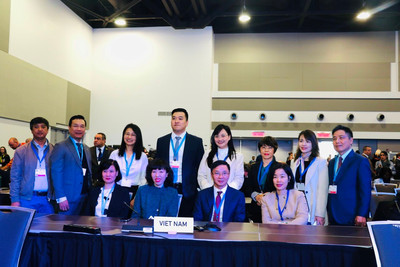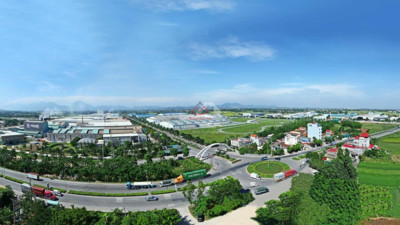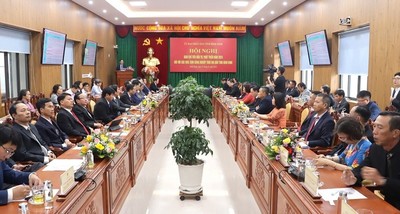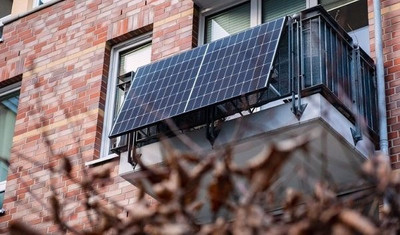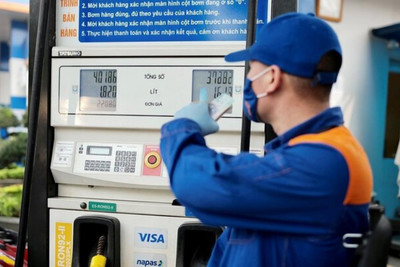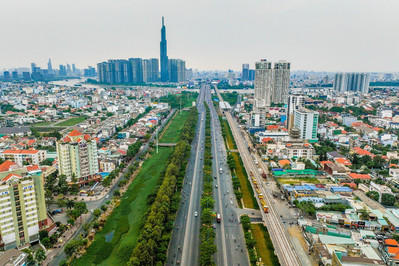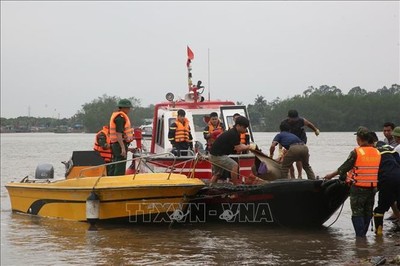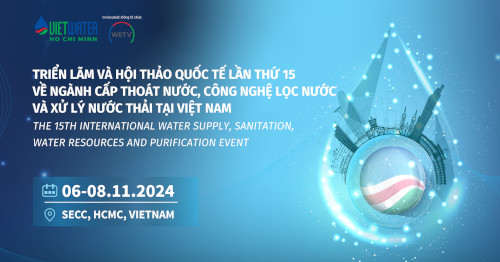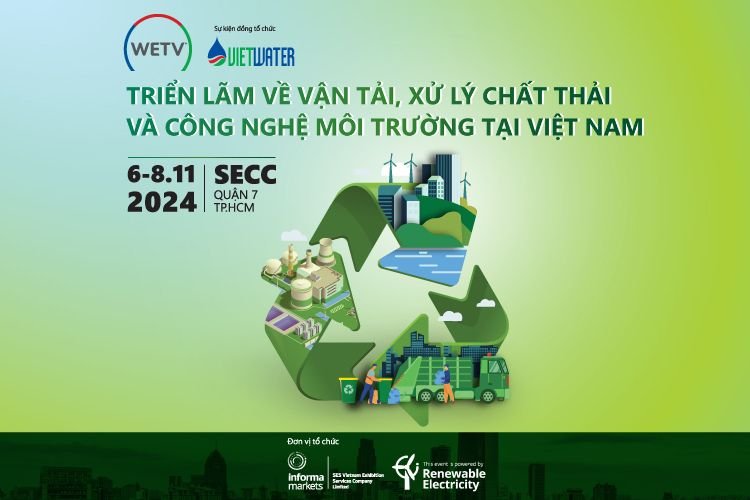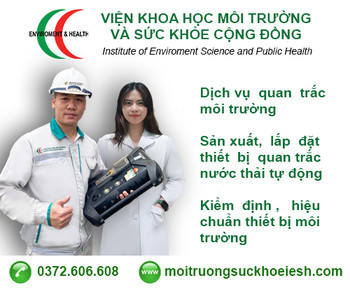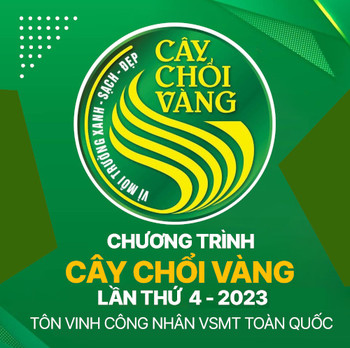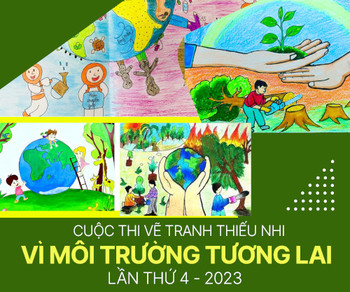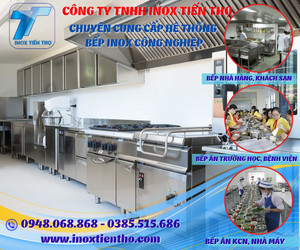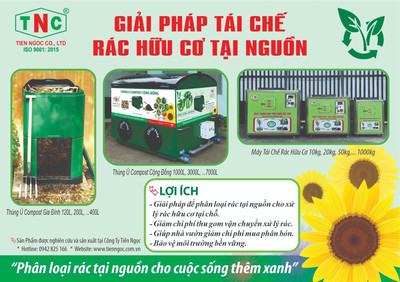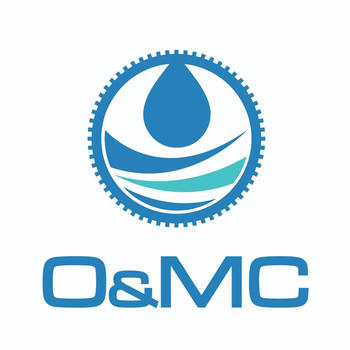Công bố Quốc tế lĩnh vực môi trường số 11-2022
Áp lực lớn từ suy thoái môi trường tác động tới đời sống, kinh tế - xã hội đòi hỏi các chính phủ phải có tầm nhìn mới và quyết tâm triển khai các giải pháp toàn diện cho chiến lược bảo vệ môi trường.
Bằng chất xám của mình, các nhà khoa học chính là những chiến sỹ tuyến đầu trên mặt trận bảo vệ Hành tinh xanh với việc công bố hàng chục triệu bài báo liên quan đến môi trường trên các tạp chí khoa học thế giới. Trong những vấn đề liên quan tới môi trường, quản lý môi trường là lĩnh vực rộng, bao quát khắp các hoạt động kinh tế - xã hội, từ sản xuất kinh doanh cho đến sinh hoạt, các khu công nghiệp, làng nghề cho đến sản xuất nông nghiệp, từ thành thị đến nông thôn,... mỗi nơi đều có nhiều vấn đề đa dạng khác nhau.
Trong các công bố quốc tế số này, Chuyên trang Quản lý môi trường vui mừng giới thiệu đến bạn đọc nghiên cứu "Nước ngầm ở miền Nam Việt Nam: Tìm hiểu các quá trình địa hóa để bảo tồn tốt hơn nguồn nước quan trọng" của các nhà khoa học đến từ Việt Nam và được công bố trên Science of The Total Environment, số 807, phần 2 vào ngày 10/2/2022. Nhân sự kiện Ngày nước Thế giới 22/3/2022 với chủ đề "Nước ngầm", công trình nghiên cứu này thực sự có ý nghĩa.

Trong phần tóm tắt nghiên cứu, các tác giả cho biết: Sự hiểu biết thấu đáo về đặc điểm địa hóa nước ngầm và các quá trình địa hóa thủy (sinh học) chi phối trong các tầng chứa nước là có giá trị để bảo vệ bền vững nguồn nước ngầm. Về khía cạnh này, nghiên cứu này cung cấp một đánh giá toàn diện về đặc điểm thủy hóa của nước ngầm trong các tầng chứa nước trầm tích của khu vực Nam Bộ Việt Nam. Bộ dữ liệu bao gồm 291 mẫu nước được thu thập vào mùa mưa và mùa khô từ 155 giếng, và thành phần hóa học của chúng gồm các ion hòa tan (Ca2+, Mg2+, Na+, K+, HCO3−, Cl−, SO42−, NO3−, NH4+, Fe, tổng lượng hòa tan chất rắn) và pH.
Các nhà khoa học đã tính toán chỉ số chất lượng nước ngầm để xác định mức độ phù hợp của nước ngầm cho mục đích sinh hoạt. Theo đó, khoảng 47% mẫu nước ngầm có chất lượng từ kém đến không phù hợp cho mục đích sinh hoạt, trong đó tổng chất rắn hòa tan (TDS) và nồng độ sắt cao là những yếu tố chính. Họ đã kiểm tra các đặc điểm thủy hóa bằng các phân tích thống kê đa biến (Phân tích cụm phân cấp và Phân tích thành phần chính).
Kết quả cho thấy bốn nhóm nước: nước ngầm ngọt (TDS <1 g / L) ở vùng cao, nước ngầm mặn mặn ở vùng thấp, nước ngầm mặn ở vùng đất thấp và nước ngầm mặn / chua ở vùng thấp. Mặc dù khu vực cao nguyên hiện không bị ảnh hưởng bởi quá trình nhiễm mặn, nhưng sự ô nhiễm bởi nitrat và clorua kết hợp với mật độ dân số đô thị dày đặc và các hoạt động nông nghiệp đang làm suy giảm nguồn nước ngầm. Mặt khác, vùng đất thấp Nam Bộ rất dễ bị xâm thực bởi nước biển. Chỉ có 34% trong số 191 mẫu được lấy ở vùng đồng bằng phía Nam Việt Nam là còn "trong sạch".
Dưới góc độ đó, nghiên cứu này đã mô tả vị trí địa lý cụ thể của các nhóm nước ngầm khác nhau ở miền Nam Việt Nam. Phát hiện này có ý nghĩa quan trọng trong việc hỗ trợ các nhà khoa học nghiên cứu về nguồn nước và những người ra quyết định trong việc thực hiện các biện pháp quản lý nước ngầm có mục tiêu vì các chiến lược phòng ngừa và bảo vệ phải được điều chỉnh cho phù hợp với các đặc điểm địa hóa nước ngầm và các quá trình địa hóa thủy (sinh học) nổi trội.
Trong Công bố Quốc tế lĩnh vực môi trường Số 11-2022, Chuyên trang Quản lý môi trường giới thiệu tới quý độc giả những nội dung chính như sau:
Về quản lý môi trường
- Phản ứng của xu hướng bề mặt O3 và PM2.5 đối với những thay đổi của lượng khí thải do con người tạo ra vào mùa hè ở Bắc Kinh trong giai đoạn 2014–2019: Một nghiên cứu dựa trên hồi quy đa tuyến tính và WRF-Chem.
- Nước ngầm ở miền Nam Việt Nam: Tìm hiểu các quá trình địa hóa để bảo tồn tốt hơn nguồn nước quan trọng.
- Phân tích hiệu quả và cơ cấu tiêu thụ năng lượng trong lĩnh vực công nghiệp ở các nước thuộc Liên minh Châu Âu từ năm 1995 đến năm 2019.
- Hướng tới một phương pháp luận bền vững toàn diện để đánh giá các tác động do con người gây ra đối với hệ sinh thái: Đánh giá việc tích hợp Đánh giá vòng đời, Đánh giá rủi ro môi trường và Đánh giá dịch vụ hệ sinh thái.
- Microplastics trong các hệ sinh thái nước ngọt Châu Á: Kiến thức và quan điểm hiện tại.
- Kinh tế sinh học và phục hồi xanh trong kỷ nguyên sau COVID-19.
- Ảnh hưởng của việc sử dụng đất, khí hậu và tính không thấm nước lên chất lượng nước mưa đô thị: Một phân tích tổng hợp.
- Theo dõi và đo lường chất lượng không khí trong một đô thị được phát sóng: Bối cảnh hóa bộ dữ liệu từ khu vực Detroit Michigan từ năm 1952 đến năm 2020.
- Định giá dịch vụ hệ sinh thái ở Trung Quốc: Phân tích tổng hợp.
Về môi trường đô thị
- Khám phá sự đóng góp thực sự của sự thay đổi kinh tế xã hội đối với ô nhiễm PM2.5 đô thị: Bằng chứng mới từ phương sai thay đổi theo không gian.
- Tối ưu hóa đa mục tiêu của các giải pháp công nghệ trong hệ thống xử lý chất thải rắn đô thị cùng với các vấn đề chuyển hóa giữa các chất ô nhiễm.
- Đánh giá dài hạn mạng lưới cảm biến không khí chi phí thấp để giám sát chất lượng không khí trong nhà và ngoài trời ở quy mô cộng đồng.
- Hiểu toàn diện về các hành vi và cơ chế chuyển đổi của clo và ion kim loại trong tro bay đốt chất thải rắn đô thị trong quá trình xử lý nhiệt.
- Các parafin clo hóa chuỗi ngắn và trung bình trong đất từ một khu vực đô thị phía bắc Trung Quốc: Mức độ, sự phân bố và các mô hình tương đồng.
- Tác động của ô nhiễm đô thị và công nghiệp đến các đặc điểm chức năng của động vật không xương sống sống ở đáy: Một số đặc điểm có lợi cho sự tồn tại không?
- Các chính sách hạn chế giao thông được áp dụng ở thành phố Barcelona có thể cải thiện chất lượng không khí ở mức độ nào?
- Tác động của các thông số hình thái đến thông gió đô thị ở các thành phố nhỏ: Trường hợp của quận Tuscolano-Don Bosco ở Rome.
- Làm sạch khí bãi rác bằng các ion canxi chiết xuất từ tro bay đốt chất thải rắn đô thị.
- Virome trong nước mưa thu hoạch từ mái nhà của một vùng thu nhập thấp đô thị hóa đông đúc.
Về môi trường khu công nghiệp
- Các động lực tiềm ẩn và nguy cơ sức khỏe xác suất của sự tích tụ kim loại nặng trong đất từ một khu vực chất thải điện tử, đông nam Trung Quốc.
- Phân hủy hiệu quả thuốc nhuộm azo từ nước thải dệt nhuộm bằng quy trình điện peroxone.
- Quá trình ozon hóa xúc tác tiên tiến để phân hủy các chất ô nhiễm dược phẩm - Đánh giá.
- Tổng hợp chất xúc tác quang nano ánh sáng nhìn thấy dựa trên bậc ba để khử nhiễm nước thải chứa thuốc nhuộm hữu cơ.
- Loại bỏ dược phẩm khỏi nước bằng cách sử dụng than sinh học có nguồn gốc từ bùn thải: Đánh giá.
- Chế tạo nanocompozit Ag lai dựa trên than sinh học từ chất thải sinh khối tảo để xử lý nước thải chứa nhiều thuốc nhuộm độc hại.
- Tính bền vững về kinh tế và môi trường đối với xử lý sinh học kỵ khí đối với nước thải từ ngành sản xuất giấy và bìa cứng.
- Đặc trưng của việc sản xuất khí đốt giàu hydro bằng cách nhiệt phân bùn thải có hàm lượng tro cao.
- Nexus giữa ô nhiễm không khí, phát triển doanh nghiệp và nâng cấp cơ cấu công nghiệp khu vực: Một phân tích của hội đồng quốc gia Trung Quốc dựa trên dữ liệu thu được từ vệ tinh.
Sau đây là tên và phần tóm tắt các bài nghiên cứu bằng tiếng Anh:
QUẢN LÝ MÔI TRƯỜNG
1. Sweet and sour: A quantitative analysis of methane emissions in contrasting Alberta, Canada, heavy oil developments
Science of The Total Environment, Volume 807, Part 2, 10 February 2022, 150836
Abstract
Cold heavy oil production with or without sand (CHOPS, or CHOP) are prevalent methods of oil extraction in western Canada. CHOP(S) sites account for over 40% of all reported vented methane (CH4) from oil production in Alberta, and high rates of CH4 emissions have been confirmed in independent measurement studies. In this study, we used truck-based surveys coupled with qualitative optical gas imaging (OGI) to quantify and characterize methane emission rates and sources at nearly 1350 and 940 well sites in two major CHOP(S) developments respectively in 2016 and 2018. The studies were conducted in Lloydminster, Alberta, where produced gases are sweet (i.e., <0.5% sulfur) and non-olfactory, and Peace River, Alberta, where regulations were implemented in 2017 to manage sour (i.e., >0.5% sulfur) odorous emissions (hydrogen sulfide, BTEX, etc.). Based on results from all surveys, in Peace River, 43% of measured sites were emitting CH4, compared to 37% in Lloydminster. The measured CH4 emission rates in Peace River were, however, significantly lower than in Lloydminster for both years, and had fallen from 2016 to 2018. In 2018, emissions in Lloydminster were fairly unchanged relative to previous measurements taken in 2016. OGI showed that tanks in Peace River continue to emit CH4 despite regulatory interventions and a reported venting rate of zero. The continued emissions were thus classified as “unintended venting”, which can be a consequence of the non-routine malfunction (e.g., inappropriate operator action or poor equipment design/sizing) of vapor recovery equipment. Mitigation strategies implemented in Peace River targeting olfactory compounds were beneficial in reducing and keeping CH4 emissions lower, since these gases are co-emitted, and could even be co-regulated provincially. Reciprocal to that, we might expect future air quality improvements as a consequence of the new provincial requirements to reduce CH4 emissions under amended Directives 060 and 017.
2. Responses of surface O3 and PM2.5 trends to changes of anthropogenic emissions in summer over Beijing during 2014–2019: A study based on multiple linear regression and WRF-Chem
Science of The Total Environment, Volume 807, Part 2, 10 February 2022, 150792
Abstract
Owing to the implementation of air pollution control actions, anthropogenic emissions in Beijing have changed in recent years. Understanding the impact of changes in anthropogenic emissions on O3 and PM2.5 trends is helpful for developing air quality management strategies. Herein, we investigated the variations of air pollutants in summer over Beijing using long-term data sets from 2014 to 2019, and explored the responses of O3 and PM2.5 trends to changes in anthropogenic emissions based on multiple linear regression (MLR) analysis and WRF-Chem model. The results indicated a significant decrease in PM2.5, but a near constant level of O3 during 2014–2019. The decrease rate of PM2.5, which was lower than that of SO2, might be due to the effect of NO2 on atmospheric PM2.5. Both the slightly increasing correlations between PM2.5 and NO2 and the WRF-Chem model simulations implied that atmospheric PM2.5 in Beijing is trending to be more sensitive to NOx than SO2. The emissions of NOx and VOCs from industry and transportation were found to make great contribution to O3 production in Beijing. Due to the titration of NOx in VOC-limited regime, the relatively low emission ratios of NOx and VOCs from industry and transportation in Beijing provided convincing evidence for the persistently high O3 concentrations during 2014–2019. However, the noticeable increase of the O3 trends in other areas (e.g., Hebei, Tianjin) could be explained by the significant decline in the emission ratios of NOx and VOCs from anthropogenic emissions especially industry during 2014–2019. Controlling the emission of NOx can substantially reduce PM2.5 pollution, but may aggravate O3 pollution, and thus effective VOC emission control strategies need to be considered for simultaneously controlling O3 and PM2.5 pollution in Beijing and other regions of China.
3. Groundwater in Southern Vietnam: Understanding geochemical processes to better preserve the critical water resource
Science of The Total Environment, Volume 807, Part 2, 10 February 2022, 151345
Abstract
A thorough understanding of groundwater geochemical characteristics and dominant hydro(bio)geochemical processes in the aquifers is valuable for sustainable groundwater protection. With this respect, this study provides a comprehensive assessment of hydrogeochemical characteristics of groundwater in sedimentary aquifers of the Southern region of Vietnam. The dataset comprised 291 water samples collected in rainy and dry seasons from 155 wells, and their chemical compositions of dissolved ions (Ca2+, Mg2+, Na+, K+, HCO3−, Cl−, SO42−, NO3−, NH4+, Fe, total dissolved solids) and pH. We calculated the groundwater quality index to determine the suitability of groundwater for drinking purposes. Accordingly, about 47% of groundwater samples range from poor to unsuitable quality for drinking purposes, in which total dissolved solid (TDS) and high iron concentrations are primary factors. We also examined hydrogeochemical characteristics by multivariate statistical analyses (Hierarchical Cluster Analysis and Principal Component Analysis). The results demonstrated four groups of water: fresh groundwater (TDS < 1 g/L) in the highland (Group 1), lowland fresh-to-saline groundwater (2a), lowland saline groundwater (2b), and lowland saline/acidic groundwater (2c). Although the highland area is currently not impacted by salinization, the contamination by nitrate and chloride associated with a dense urban population and agricultural practices is deteriorating its fresh groundwater resources. On the other hand, the lowland area of Southern Vietnam is highly vulnerable to seawater intrusion (groups 2b and 2c). Only 34% out of 191 samples collected in the lowland area of southern Vietnam remained fresh. In this light, this study depicted the specific geographical location for various groundwater groups in Southern Vietnam. This finding is significant to assist water scientists and decision-makers in implementing targetted groundwater management measures as prevention and protection strategies should be tailored to groundwater geochemical characteristics and the dominant hydro(bio)geochemical processes.
4. Analysis of the efficiency and structure of energy consumption in the industrial sector in the European Union countries between 1995 and 2019
Science of The Total Environment, Volume 808, 20 February 2022, 152052
Abstract
The industrial sector is one of the most important sectors of the global economy, having a huge impact on the development of individual countries and regions. This sector covers a wide and diverse range of activities, which makes it of key importance for the economy of the European Union (EU) countries. As a result, the processes related to energy transformation and climate policy are increasingly connected with the sector in question. The need to improve the competitiveness of the economy and the implementation of climate and energy strategies means that this sector, like the entire EU economy, must rapidly enhance its energy efficiency and the structure of energy consumption. The following paper addresses this problem by presenting the results of a comprehensive study of the structure and volume of energy consumed by this sector in the period between 1995 and 2019. Based on this study, quantitative changes and the structure of energy consumed in this sector in the studied period were determined for the entire EU and its individual countries. The use of the Gini coefficient and the Lorenz curves allowed for the determination of the inequality of energy consumption in the industrial sector. The coefficients of variation and the dynamics of changes in energy consumption, both in total and from individual sources, for the EU countries were also determined. The aim of this part of the study was to indicate directions and the intensity of changes related to the structure and consumption of energy in this sector. In the next stage, groups of similar countries were created and compared in terms of the structure of energy consumed by the industrial sector in 1995 and 2019 (using the Kohonen's neural network). Relationships between the amount of energy consumed by the industrial sector in the entire EU and the basic economic and climate parameters of the economy were also delineated. The energy intensity of this sector and the dynamics of its changes in individual EU countries over the analyzed period were also specified. The results proved a great diversity of the EU countries and the improving energy efficiency and structure of energy consumed by the industrial sector. The research, together with its results, significantly broaden the knowledge of changes in the volume and structure of energy consumption in the industrial sector for the EU countries. The results make it possible to assess the actions of individual countries and the current state of implementation of EU climate and energy policy. They should also be used to develop future assumptions of this policy.
5. Towards a comprehensive sustainability methodology to assess anthropogenic impacts on ecosystems: Review of the integration of Life Cycle Assessment, Environmental Risk Assessment and Ecosystem Services Assessment
Science of The Total Environment, Volume 808, 20 February 2022, 152125
Abstract
Nowadays, a variety of methodologies are available to assess local, regional and global impacts of human activities on ecosystems, which include Life Cycle Assessment (LCA), Environmental Risk Assessment (ERA) and Ecosystem Services Assessment (ESA). However, none can individually assess both the positive and negative impacts of human activities at different geographical scales in a comprehensive manner. In order to overcome the shortcomings of each methodology and develop more holistic assessments, the integration of these methodologies is essential. Several studies have attempted to integrate these methodologies either conceptually or through applied case studies. To understand why, how and to what extent these methodologies have been integrated, a total of 110 relevant publications were reviewed. The analysis of the case studies showed that the integration can occur at different positions along the cause-effect chain and from this, a classification scheme was proposed to characterize the different integration approaches. Three categories of integration are distinguished: post-analysis, integration through the combination of results, and integration through the complementation of a driving method. The literature review highlights that the most recurrent type of integration is the latter. While the integration through the complementation of a driving method is more realistic and accurate compared to the other two categories, its development is more complex and a higher data requirement could be needed. In addition to this, there is always the risk of double-counting for all the approaches. None of the integration approaches can be categorized as a full integration, but this is not necessarily needed to have a comprehensive assessment. The most essential aspect is to select the appropriate components from each methodology that can cover both the environmental and socioeconomic costs and benefits of human activities on the ecosystems.
6. Microplastics in Asian freshwater ecosystems: Current knowledge and perspectives
Science of The Total Environment, Volume 808, 20 February 2022, 151989
Abstract
Plastic pollution in freshwater ecosystems, including microplastics (MPs) smaller than 5 mm, has become an emerging global concern. Asia is considered a “hot spot” for plastic pollution due to rapid economic and demographic growth, together with rapid urbanization. Here, we provide an overview of the current knowledge on MP abundance, sources, fate, and transfer in Asian freshwater ecosystems based on publications from January 2014 to May 2021. MP contamination in freshwater compartments, including water, sediment, and biota, was found to vary strongly. In water, it ranged from 0.004 items m−3 in a moderately urbanized region to more than 500,000 items m−3 in a dumping river in a highly populated watershed. In the sediment, MP abundance ranged from 1 to more than 30,000 items kg−1 dry weight. Polyethylene (PE) and polypropylene (PP) were predominant in both water and sediment compartments. MP was detected in biota samples from all the studied species, but their abundance depended on the locations and species studied. Overall, MP characteristics (form, size, color, and polymer type) depended on sources and natural constraints (mainly hydrodynamics). This study also revealed that MP in Asian freshwater ecosystems mainly originated from domestic wastewater/runoff, followed by industrial emissions, fisheries and aquaculture wastewater. Plastic waste is not efficiently recycled or incinerated in Asia, leading to MP transfer and accumulation in the aquatic environment, and, more importantly, to ingestion by low to high trophic level organisms. This work highlights several knowledge gaps to guides future research to improve MP pollution management for the sustainable development of highly populated regions such as Asia.
7. Bioeconomy and green recovery in a post-COVID-19 era
Science of The Total Environment, Volume 808, 20 February 2022, 152180
Abstract
The spread of the COVID-19 pandemic has generated a health crisis and repetitive lockdowns that disrupted different economic and societal segments. As the world has placed hope on the vaccination progress to bring back the socio-economic “normal,” this article explores how the bioeconomy can enhance the resilience and sustainability of bio-based, food, and energy systems in the post-COVID-19 era. The proposed recovery approach integrates technological innovations, environment, ecosystem services, “biocities,” food, rural economies, and tourism. The importance of integrating culture, arts, and the fashion industry as part of the recovery is underlined towards building a better bioeconomy that, together with environmental safeguards, promotes socio-cultural and economic innovations. This integration could be achieved supporting communities and stakeholders to diversify their activities by combining sustainable production with decarbonization, stimulating private investments in this direction and monitoring the resulting impact of mitigation measures. Food systems should become more resilient in order to allow adapting rapidly to severe crises and future shocks, while it is important to increase circularity towards the valorization of waste, the integration of different processes within the biorefinery concept and the production of bio-based products and biofuels.
8. Effects of land use, climate, and imperviousness on urban stormwater quality: A meta-analysis
Science of The Total Environment, Volume 809, 25 February 2022, 152206
Abstract
Many natural and anthropogenic factors cause degradation of urban stormwater quality, resulting in negative consequences to receiving waters. In order to improve water quality models at a variety of scales, accurate estimates of pollutant (nutrients, total suspended solids, and heavy metal) concentrations are needed using potential explanatory variables. To this end, a meta-analysis was performed on aggregated stormwater quality data from the published literature from 360 urban catchments worldwide to understand how urban land use and land cover (LULC), climate (i.e., Kӧppen-Geiger zone), and imperviousness (1) affect runoff quality, and (2) whether they are able to predict stormwater pollutant concentrations. Runoff pollutant concentrations were more influenced by LULC and climate than imperviousness. Differences in LULC significantly affected the generation of metals and some nitrogen species. Road, city center, and commercial LULCs generally produced the most elevated pollutant concentrations. Changes in climate zones resulted in significant differences in concentrations of nutrients and metals. Continental and arid climate zones produced runoff with the highest pollutant concentrations. Rainfall patterns seemed to have a more important role in affecting runoff quality than seasonal temperature. Differences in imperviousness only significantly affected chromium and nickel concentrations, although increased imperviousness led to slightly (not significantly) elevated concentrations of nutrients, suspended solids, and other heavy metals. Multiple linear regression models were created to predict the quality of urban runoff. Predictive equations were significant (p < 0.05) for 67% of the pollutants analyzed (ammonia, total Kjeldahl nitrogen, total nitrogen, total phosphorus, cadmium, nickel, lead, and zinc) suggesting that LULC, climate, and imperviousness are useful predictors of stormwater quality when local field monitoring or modeling is not practical. This study provides useful relationships to better inform urban stormwater quality models and regulations such as total maximum daily loads.
9. Air quality monitoring and measurement in an urban airshed: Contextualizing datasets from the Detroit Michigan area from 1952 to 2020
Science of The Total Environment, Volume 809, 25 February 2022, 152120
Abstract
With urban air quality being a pressing public health concern, community members are becoming increasingly engaged in determining the links between air quality and human health. Although new measurement tools such as low-cost sensors make local data more accessible, a better understanding of gaps in regional datasets is needed to develop effective metropolitan-scale solutions. Using scoping review methodology, we compiled 214 published journal articles and grey literature reports of air quality data from the Detroit, Michigan area from 1952 through 2020. This critical scoping review focuses on air quality datasets, but related topics such as health studies and community-based participatory science studies were examined from the included articles. Most of these publications were peer-reviewed journal articles published after 2001. Particulate matter, nitrous oxides, and sulfur dioxide were the most commonly studied air pollutants, and asthma was the most frequently associated health outcome paired with air pollution datasets. Few publications reported methods for community-based participatory science. This critical scoping review establishes a foundation of historical air quality data for the Detroit metropolitan area and a set of evaluation criteria that can be replicated in other urban centers. This foundation enables future detailed analysis of air quality datasets and showcases strategies for implementing effective community science programs and monitoring efforts.
10. Ecosystem services valuation in China: A meta-analysis
Science of The Total Environment, Volume 809, 25 February 2022, 151122
Abstract
Although the number of studies on ecosystem service value (ESV) has steadily increased, large variations and inconsistent patterns in the estimated results have motivated us to systematically explore the factors underlying such discrepancies. Therefore, this study aims to explore the role of different ecosystems, ESs, valuation methods, and economic development in the ESV by employing a meta-analysis of valuation research conducted on China's ES based on 3356 observations from 140 studies. The results show that wetlands ecosystem has the highest value among the seven major ecosystems, and regulation of water flows service is more valuable than the other services. We also provide a matrix of monetary values for different categories of ecosystems and their services, which can be used as a quick tool to predict ESVs in China and assess the value changes caused by land-use changes. We find that the ESVs estimated following the equivalent factor method are different from those estimated by the other methods, indicating that researchers should be very careful when selecting valuation methods for evaluating ESs. The economic development level has different impacts on different ESs, that is, gross domestic product (GDP) per capita has a high, positive correlation with the recreational service value, but has no correlation with the habitat service value.
11. Plastic waste management: A road map to achieve circular economy and recent innovations in pyrolysis
Science of The Total Environment, Volume 809, 25 February 2022, 151160
Abstract
The contemporary world is challenged by mounting of plastic waste on the environment due to increase in economy and population. Over 90% of virgin plastics are produced from fossil fuels, hence, recycling is the best solution to reduce extracting and exploiting fossil fuels, and grow towards a circular economy. The type of waste and its hierarchy offers a route to pick up proper waste recycling policies which get the most out of the available resources and its protection. Pyrolysis process offers more valuable ways to turn the plastic waste to useful products for fueling and raw materials for making new plastics, and acts as an environmentally sound alternative to incineration and inefficient landfilling. This study provides a basic insight into plastic pyrolysis technology with recent trends and innovations in various countries, and their path towards the achievement of a circular economy. Plastic manufacturers, waste managers and the public plays a vital role in the development of the recycling sector. Recycling will stay underdeveloped and borderline without specific regulations to increase its effectiveness. Sustainable development in managing the plastic would be possible only through significant policies to instruct the individual and social challenges. The current article also targets the readers without scientific knowledge to get a basic idea of pyrolysis and general awareness of proper plastic waste management in a closed loop system.
12. Implications of COVID-19 on global environmental pollution and carbon emissions with strategies for sustainability in the COVID-19 era
Science of The Total Environment, Volume 809, 25 February 2022, 151657
Abstract
The impacts of COVID-19 on global environmental pollution since its onset in December 2019 require special attention. The rapid spread of COVID-19 globally has led countries to lock down cities, restrict traffic travel and impose strict safety measures, all of which have implications on the environment. This review aims to systematically and comprehensively present and analyze the positive and negative impacts of COVID-19 on global environmental pollution and carbon emissions. It also aims to propose strategies to prolong the beneficial, while minimize the adverse environmental impacts of COVID-19. It systematically and comprehensively reviewed more than 100 peer-reviewed papers and publications related to the impacts of COVID-19 on air, water and soil pollution, carbon emissions as well as the sustainable strategies forward. It revealed that PM2.5, PM10, NO2, and CO levels reduced in most regions globally but SO2 and O3 levels increased or did not show significant changes. Surface water, coastal water and groundwater quality improved globally during COVID-19 lockdown except few reservoirs and coastal areas. Soil contamination worsened mainly due to waste from the use of personal protective equipment particularly masks and the packaging, besides household waste. Carbon emissions were reduced primarily due to travel restrictions and less usage of utilities though emissions from certain ships did not change significantly to maintain supply of the essentials. Sustainable strategies post-COVID-19 include the development and adoption of nanomaterial adsorption and microbial remediation technologies, integrated waste management measures, “sterilization wave” technology and energy-efficient technologies. This review provides important insight and novel coverage of the environmental implications of COVID-19 in more than 25 countries across different global regions to permit formulation of specific pollution control and sustainability strategies in the COVID-19 and post-COVID-19 eras for better environmental quality and human health.
13. Technologies for municipal solid waste management: Current status, challenges, and future perspectives
Chemosphere, Volume 288, Part 1, February 2022, 132403
Abstract
Municipal solid waste (MSW) is a reflection of the culture that generates it and has a negative impact on the health of the humans and the environment. In the global context, people are abandoning increasing volumes of garbage, and the content of that waste is becoming more complicated than it has ever been, as plastic and electronic consumer goods spread. At the same time, the world is rapidly urbanizing. These changes place a burden on cities to manage garbage appropriately on both a social and environmental level. Globally, extensive research has been conducted to develop a comprehensive MSW management system that includes treatment. The primary objective of this article is to examine municipal solid waste in eight of China's eastern coastal regions. With the use of this review, we found that MSW generation is increasing in Shandong, Guangdong, Zhejiang, and Fujian provinces, but declining in other eastern coastal cities, provinces, and special zones. Furthermore, municipal solid waste in China is treated utilizing 52 percent landfill, 45 percent incineration, and 3 percent composting techniques, resulting in significantly lower usage efficiency than in developed countries. The effectiveness of China's municipal waste management system must be improved. In addition, this review examines MSW management issues and prospects in China, as well as recommendations for strengthening the MSW management system.
14. Solid waste management during COVID-19 pandemic: Recovery techniques and responses
Chemosphere, Volume 288, Part 1, February 2022, 132451
Abstract
Solid waste management (SWM) is a service of public health that is often understated in its significance. If a public health emergency like the COVID-19 outbreak exacerbates the SWM problem, its true importance as an imperative service becomes more apparent. The crisis triggered by the COVID-19 pandemic has changed the dynamics of waste generation globally in nearly every sector and has therefore raised the need for special attention. The unpredictable variations in the quantity and composition of waste also pressurize policymakers to react dynamically. This review highlights the major problems faced during the pandemic by SWM sector and the underlying possibilities to fill the gaps in the existing system. The review focuses on particular areas that have been the most important cause of concern throughout the crisis in the process of waste management. In addition, the mixing of virus infected biomedical waste with the stream of normal solid waste and lack of active involvement of the citizen and cooperation presents the major negative safety and health concerns for the workers involved in the sanitation process. Apart from presenting innovative solutions to tackle current waste management issues, this study also proposes several key potential guidelines to holistically mitigate possible future pandemics, if any. This article can also be of great implication for creation of a specific strategy towards preventing/controlling any potential pandemic of similar kind in the near future.
15. Assessing the change of ambient air quality patterns in Jiangsu Province of China pre-to post-COVID-19
Chemosphere, Volume 288, Part 2, February 2022, 132569
Abstract
Following the outbreak of the novel coronavirus in early 2020, to effectively prevent the spread of the disease, major cities across China suspended work and production. While the rest of the world struggles to control COVID-19, China has managed to control the pandemic rapidly and effectively with strong lockdown policies. This study investigates the change in air pollution (focusing on the air quality index (AQI), six ambient air pollutants nitrogen dioxide (NO2), ozone (O3), sulphur dioxide (SO2), carbon monoxide (CO), particulate matter with aerodynamic diameters ≤10 μm (PM10) and ≤2.5 μm (PM2.5)) patterns for three periods: pre-COVID (from 1 January to May 30, 2019), active COVID (from 1 January to May 30, 2020) and post-COVID (from 1 January to May 30, 2021) in the Jiangsu province of China. Our findings reveal that the change in air pollution from pre-COVID to active COVID was greater than in previous years due to the government's lockdown policies. Post-COVID, air pollutant concentration is increasing. Mean change PM2.5 from pre-COVID to active COVID decreased by 18%; post-COVID it has only decreased by 2%. PM10 decreased by 19% from pre-COVID to active COVID, but post-COVID pollutant concentration has seen a 23% increase. Air pollutants show a positive correlation with COVID-19 cases among which PM2.5, PM10 and NO2 show a strong correlation during active COVID-19 cases. Metrological factors such as minimum temperature, average temperature and humidity show a positive correlation with COVID-19 cases while maximum temperature, wind speed and air pressure show no strong positive correlation. Although the COVID-19 pandemic had numerous negative effects on human health and the global economy, the reduction in air pollution and significant improvement in ambient air quality likely had substantial short-term health benefits; the government must implement policies to control post-COVID environmental issues.
16. Life cycle assessment and life cycle costing of advanced anaerobic digestion of organic fraction municipal solid waste
Chemosphere, Volume 289, February 2022, 133058
Abstract
The aim of this study is the evaluation of the environmental sustainability by means of Life Cycle Assessment (LCA) and economic profitability through Life Cycle Costing (LCC) of the 18 anaerobic digestion (AD) configurations carried out on Organic Fraction Municipal Solid Waste (OFMSW) at three Substrate Inoculum (S:I) ratios (1:2, 1:1 and 2:1) for three different inoculum incubation times (0, 5 and 10 d). The adopted approach was the eco-efficiency perspective, coming from the combination of technical, environmental (LCA) and economic (LCC) perspectives. The main findings of the study were that increasing both the S:I ratio and the inoculum incubation time (5 and 10 d) the environmental impacts decreased, and economic profitability increased. The lowest values of Climate Change were achieved by the AD performed with both inocula WAS and CAS for 10 d at S:I equal to 2:1: 28.67 and 27.72 kg CO2 eq respectively. The minimum AD plant size for which all the 18 AD configurations was economically profitable after 5 y of amortization was 30,000 t/y of OFMSW. Capital and operational costs decreased by increasing the incubation time of the inoculum and the S:I ratio, since higher specific biogas rate was reached, and smaller AD bio-reactor volume were adopted because hydraulic retention time decreased.
The AD plant size, for which maximal revenues and minimal capital and operational costs were detected, was 50,000 t/y OFMSW. Among all the AD configurations, the environmental sustainability and economic profitability were reached by test perfomed with inocula WAS and CAS incubated for 5 and 10 d at the highest S:I ratio 2:1.
17. Path analysis for carbon transfers embodied in China's international trade and policy implications for mitigation targets
Journal of Cleaner Production, Volume 334, 1 February 2022, 130207
Abstract
International trade has shifted part of the responsibility for carbon mitigation from consumers to producers, therefore quantifying mitigation targets and allocating responsibilities have become the focus of research. This study quantified carbon transfers between mainland China and its trade partners from a consumption perspective, and identified the transfer paths from initial production to final production and then consumption. We projected China's allowed carbon increment before peak carbon, and recommend policy measures based on different national technological levels. Given China's 1.25 Gt net exports of carbon, the country's share of the allowed carbon increment before peak carbon would increase from 30% to 51% in 2015 before 2030. The net carbon transfer paths from China driven by consumption by its trading partners accounted for 87% of the total number of paths, with paths to the United States and Hong Kong for exports of both primary and final products being the most prominent. On the other hand, the net carbon import transfer paths driven by China's consumption were dominated by imports of primary products from South Korea and Russia. In comparison with the production country, a country that drives net carbon transfers and has a higher technological level should strengthen its industrial and consumption structures and reduce emission through technical assistance to countries with a lower technological level; the latter should improve production efficiency to reduce imported demand and mitigate the emission. Our study provides a methodological framework and theoretical guidance for a more scientific and equitable allocation of carbon mitigation responsibilities.
MÔI TRƯỜNG ĐÔ THỊ
1. Profiles of primary aromatic amines, nicotine, and cotinine in indoor dust and associated human exposure in China
Science of The Total Environment, Volume 806, Part 4, 1 February 2022, 151395
Abstract
Despite the widespread use of primary aromatic amines (AAs) in consumer products, little is known about their prevalence in house dust. In this study, we investigated the occurrence of 35 AAs and two tobacco chemical markers (nicotine and its breakdown product cotinine) in 119 samples of house dust collected from five provinces in China. Ten of the 35 AAs and [nicotine and cotinine] were found in >80% and 100% of the samples, respectively, at concentration ranges of 29.1–19,200 (median: 700 ng/g) and 23.2–22,400 (4600) ng/g, respectively. Aniline was the predominant AA found in all dust samples (median: 257 ng/g). Dust samples from Henan and Shanxi provinces contained higher summed concentrations of the 10 AAs than those from Sichuan and Shandong, although the concentrations did not vary significantly among the five provinces (p > 0.05). A significant (p = 0.048), positive correlation (r = 0.882) existed between concentrations of nicotine and cotinine in dust samples. Similarly, concentrations of AAs were significantly correlated with those of nicotine in dust samples. Dyestuffs, rubber products, polyurethane foam and tobacco smoke are the major sources of AAs in the indoor environment. The estimated daily intakes (EDI) through dust ingestion ranged from 0.349 (adults) to 6.62 ng/kg-bw/day (toddlers) for AAs and from 1.27 to 51.1 ng/kg-bw/day for nicotine which are well below the current tolerable daily intakes.
2. Exploring the real contribution of socioeconomic variation to urban PM2.5 pollution: New evidence from spatial heteroscedasticity
Science of The Total Environment, Volume 806, Part 4, 1 February 2022, 150929
Abstract
Making cities safe, resilient and sustainable is one of the United Nations Sustainable Development Goals (SDGs). Health risk, productivity loss and climate change caused by air pollution obstacles the present urban sustainable development, especially people living in middle-and low-income countries areas are most affected. The spatial models (such as SAR and SEM) are often considered to examine the driven factors and the spatial spillover effect of PM2.5 concentrations. Given that these spatial models assume spatially dependent second-order moments of the dependent variable without considering the possible autoregressive conditional heteroscedasticity. This present study empirically examines the heterogeneous effects of economic development, secondary industry, FDI, population density, number of buses and urbanization on PM2.5 concentrations in 269 Chinese cities using the SAR, spARCH and SARspARCH, respectively. This newly proposed Spatial ARCH model is the first attempt to be applied to environmental research. The empirical results indicate that an increasing spatial correlation with PM2.5 concentration was observed among 269 cities during 2004–2016, and the most influential cities in high-high clustering are mainly located in North China. Furthermore, except for population density, the effects of other factors are heterogeneous on the time scale. Among those socioeconomic factors, population density shows the largest contribution to urban PM2.5 pollution, the effects of secondary industry, GDP and FDI may be overestimated in the absence of spatial neighbouring effects in mean or variance. The comparative analysis could provide new enlightenments for a deeper understanding of the socioeconomic impact on PM2.5 pollution.
3. COVID-19 in New York state: Effects of demographics and air quality on infection and fatality
Science of The Total Environment, Volume 807, Part 1, 10 February 2022, 150536
Abstract
The coronavirus disease 2019 (COVID-19) has had a global impact that has been unevenly distributed among and even within countries. Multiple demographic and environmental factors have been associated with the risk of COVID-19 spread and fatality, including age, gender, ethnicity, poverty, and air quality among others. However, specific contributions of these factors are yet to be understood. Here, we attempted to explain the variability in infection, death, and fatality rates by understanding the contributions of a few selected factors. We compared the incidence of COVID-19 in New York State (NYS) counties during the first wave of infection and analyzed how different demographic and environmental variables associate with the variation observed across the counties. We observed that infection and death rates, two important COVID-19 metrics, to be highly correlated with both being highest in counties located near New York City, considered as one of the epicenters of the infection in the US. In contrast, disease fatality was found to be highest in a different set of counties despite registering a low infection rate. To investigate this apparent discrepancy, we divided the counties into three clusters based on COVID-19 infection, death, or fatality, and compared the differences in the demographic and environmental variables such as ethnicity, age, population density, poverty, temperature, and air quality in each of these clusters. Furthermore, a regression model built on this data reveals PM2.5 and distance from the epicenter are significant risk factors for infection, while disease fatality has a strong association with age and PM2.5. Our results demonstrate that for the NYS, demographic components distinctly associate with specific aspects of COVID-19 burden and also highlight the detrimental impact of poor air quality. These results could help design and direct location-specific control and mitigation strategies.
4. The state of art on the prediction of efficiency and modeling of the processes of pollutants removal based on machine learning
Science of The Total Environment, Volume 807, Part 1, 10 February 2022, 150554
Abstract
During the last few years, important advances have been made in big data exploration, complex pattern recognition and prediction of complex variables. Machine learning (ML) algorithms can efficiently analyze voluminous data, identify complex patterns and extract conclusions. In chemical engineering, the application of machine learning approaches has become highly attractive due to the growing complexity of this field. Machine learning allows computers to solve problems by learning from large data sets and provides researchers with an excellent opportunity to enhance the quality of predictions for the output variables of a chemical process. Its performance has been increasingly exploited to overcome a wide range of challenges in chemistry and chemical engineering, including improving computational chemistry, planning materials synthesis and modeling pollutant removal processes. In this review, we introduce this discipline in terms of its accessible to chemistry and highlight studies that illustrate in-depth the exploitation of machine learning. The main aim of the review paper is to answer these questions by analyzing physicochemical processes that exploit machine learning in organic and inorganic pollutants removal. In general, the purpose of this review is both to provide a summary of research related to the removal of various contaminants performed by ML models and to present future research needs in ML for contaminant removal.
5. Multi-objective optimization of technology solutions in municipal solid waste treatment system coupled with pollutants cross-media metabolism issues
Science of The Total Environment, Volume 807, Part 1, 10 February 2022, 150664
Abstract
The environmental impact, energy conservation, and economic cost are prominent decision criteria in municipal solid waste (MSW) management, among which trade-off relationships widely exist because of different features of pollutant treatment technologies. These three objectives should thereby be simultaneously considered in the design of technology combinations in MSW treatment system (MSWTS). In addition, comprehensive characterization of environmental impact of the whole MSWTS should cover the complex pollutants cross-media metabolism in the treatment of both MSW and subsequent secondary pollution. This study developed a multi-objective optimization model to select optimal technology solutions in MSWTS. Three objectives, the minimizations of total environmental impact calculated from pollutants cross-media metabolism perspective, net energy consumption, and total cost are optimized through the second generation of the Non-dominated Sorting Genetic Algorithm (NSGA-II). Final MSW management schemes under environment, energy, and cost preferences are obtained through Vlsekriterijumska Optimizacija I Kompromisno Resenje (VIKOR) method. This paper uses China's MSWTS as a case study and finds that Pareto optimal solutions can reduce the total environmental impact and the net energy consumption by 24.2% and 7.4% respectively, while increase the total cost by 18.2% in average, compared with the baseline scenario. The promotion of MSW biological treatment technologies, especially anaerobic digestion (AD), can effectively improve the environmental performance of MSWTS, while the current vigorous promotion of MSW incineration in China is not recommended. Sludge co-processing in cement kiln is highly promoted under all three types of management preferences. In summary, the proposed methodology can provide decision support for the optimal design of technology solutions in MSWTS.
6. Role of anthropogenic aerosols in affecting different-grade precipitation over eastern China: A case study
Science of The Total Environment, Volume 807, Part 2, 10 February 2022, 150886
Abstract
Atmospheric aerosols play an important role in affecting clouds and precipitation by serving as condensation/ice nuclei. However, how to quantify the contribution of anthropogenic aerosols to the alteration of clouds and precipitation remains unknown. In this study, using a Weather Research and Forecasting-Chemistry (WRF-Chem) model, we quantified the impacts of anthropogenic aerosols on cloud water properties under different precipitation grades during a single rainfall event over eastern China. The results of this study show that anthropogenic aerosols have varying effects on hourly precipitation with heavy (greater than 1.04 mm/h), moderate (0.41–1.04 mm/h), and light (less than 0.41 mm/h) grades. Due to the presence of anthropogenic aerosols, heavy precipitation is intensified by 70.96%; however, moderate and light precipitation is further weakened by 24.87% and 86.43%, respectively. For heavy precipitation, the addition of anthropogenic aerosols induces an enhancement in upward motion, increases the cloud water path and effective radius through the aerosol-radiation interaction (ARI) effect, which is the main reason for the intensification of heavy-grade precipitation. In addition, the weakened upward motion and decreased ice water path caused by ARI and aerosol-cloud interaction (ACI) effects play common roles in reducing moderate and light precipitation. Studying anthropogenic aerosols' impacts on precipitation is of great importance for understanding the influence of anthropogenic pollution on the weather and climate and even for promoting precipitation forecasting and prediction.
7. Long-term evaluation of a low-cost air sensor network for monitoring indoor and outdoor air quality at the community scale
Science of The Total Environment, Volume 807, Part 2, 10 February 2022, 150797
Abstract
Given the growing interest in community air quality monitoring using low-cost sensors, 30 PurpleAir II sensors (12 outdoor and 18 indoor) were deployed in partnership with community members living adjacent to a major interstate freeway from December 2017- June 2019. Established quality assurance/quality control techniques for data processing were used and sensor data quality was evaluated by calculating data completeness and summarizing PM2.5 measurements. To evaluate outdoor sensor performance, correlation coefficients (r) and coefficients of divergence (CoD) were used to assess temporal and spatial variability of PM2.5 between sensors. PM2.5 concentrations were also compared to traffic levels to assess the sensors’ ability to detect traffic pollution. To evaluate indoor sensors, indoor/outdoor (I/O) ratios during resident-reported activities were calculated and compared, and a linear mixed-effects regression model was developed to quantify the impacts of ambient air quality, microclimatic factors, and indoor human activities on indoor PM2.5. In general, indoor sensors performed more reliably than outdoor sensors (completeness: 73% versus 54%). All outdoor sensors were highly temporally correlated (r > 0.98) and spatially homogeneous (CoD<0.06). The observed I/O ratios were consistent with existing literature, and the mixed-effects model explains >85% of the variation in indoor PM2.5 levels, indicating that indoor sensors detected PM2.5 from various sources. Overall, this study finds that community-maintained sensors can effectively monitor PM2.5, with main data quality concerns resulting from outdoor sensor data incompleteness.
8. Comprehensive understanding the transition behaviors and mechanisms of chlorine and metal ions in municipal solid waste incineration fly ash during thermal treatment
Science of The Total Environment, Volume 807, Part 2, 10 February 2022, 150731
Abstract
Municipal solid waste incineration fly ash is classified as the hazardous waste because of its high levels of heavy metals alkali chlorides, and polychlorinated dibenzo-p-dioxins. Thermal treatment is widely used for fly ash treatment because of its advantages of reduction and harmless. The transformation behaviors of chlorine and metal ions during the thermal treatment of fly ash has a significant impact on the harmless and resource of fly ash. At present, the migration behaviors of chlorine and metal ions during thermal treatment of fly ash is not clearly demonstrated. In this manuscript, the phase compositions, transformation behaviors, the variation of mass and content of chlorine and various metal ions were analyzed through diverse characterization methods under different sintering temperatures to understand the migration behaviors of chlorine and metal ions during thermal treatment. Roasting experiments showed that the migration behaviors of heavy metals and chlorides were consistent. The chlorine, sodium, potassium and heavy metal ions can be removed sharply while the calcium, aluminum, magnesium and iron were decreased slightly when the roasting temperature was above 750 °C. The findings also suggested that removed chlorides were soluble chlorides and unstable crystals in municipal solid waste incineration fly ash were inclined to formed steady structure under high temperature. The structure of roasted fly ash became denser and generated ceramic-like particle due to thermal agglomeration and chemical reactions.
9. Short- and medium-chain chlorinated paraffins in soil from an urban area of northern China: Levels, distribution, and homolog patterns
Science of The Total Environment, Volume 807, Part 2, 10 February 2022, 150833
Abstract
Short-chain chlorinated paraffins (SCCPs) are persistent organic pollutants that are present in relatively high concentrations in various environmental media in China. Many studies have focused on chlorinated paraffins in soil from agricultural land and contaminated areas. There are limited data on the levels of chlorinated paraffins in soil from urban areas. In this study, to investigate the levels, distribution, and homolog patterns of chlorinated paraffins (CPs) in soil from a typical urban area, 130 soil samples were collected and combined to form 26 pooled samples. The samples were analyzed for 50 CP congener groups (C9–17Cl5–10). The concentration ranges for SCCPs, medium-chain CPs (MCCP), and chlorinated nonane paraffin (C9-CP) were 19–1456 ng/g (average: 234 ng/g), <10–385 ng/g (average: 54 ng/g), and 1–39 ng/g (average: 11 ng/g), respectively. The CP concentrations were not significantly correlated with the total organic carbon content (P > 0.05). Compared with other areas worldwide, the SCCP and C9-CP concentrations in soil in this area were at the medium level, and the concentrations of MCCPs were at a low level. The CP concentrations were higher in soil samples collected near factories and domestic garbage disposal sites. C10Cl6–7 were the main SCCP homologs and C14Cl7–8 were the main MCCP homologs. Principal component analysis showed that the sources of C9-CPs, SCCPs, and MCCPs in the soils were similar. Risk assessment showed that the concentrations of SCCPs and MCCPs in soil in this area did not pose a significant risk to soil organisms or human health.
10. Impacts of urban and industrial pollution on functional traits of benthic macroinvertebrates: Are some traits advantageous for survival?
Science of The Total Environment, Volume 807, Part 2, 10 February 2022, 150650
Abstract
Urbanization and industrialization produce substantial changes in biodiversity and in the functionality of ecosystems. However, little is known about how anthropic pressures might drive these changes and about their functional consequences. We aimed to determine the responses of macroinvertebrate biological traits to urban and industrial pollution and assess the impacts of these disturbances on the functional diversity of these assemblages. We sampled benthic macroinvertebrates in 27 sites of four basins with different urban disturbance gradients (rural, peri-urban, and urban-industrial), among them the Matanza-Riachuelo River, one of the most polluted basins in the world. We classified macroinvertebrates into 11 traits and 56 categories. Then, we performed an RLQ analysis and computed functional richness, evenness, divergence and Rao diversity indexes for each site and community weighted means for each trait category. The urban and industrial sites (mainly low and middle Matanza-Riachuelo River Basin) showed high concentrations of ammonium, SRP, conductivity, COD, BOD, and organic matter, as well as the lowest values of DO. The functional richness and Rao index of these sites were significantly lower than that of the other sites. Macroinvertebrate traits associated with urban and industrial sites were aerial respiration (spiracles), forms of resistance (eggs or statoblast), cylindrical body shape, oviparity, feeding on microinvertebrates, and full water swimmers. These traits potentially enabled tolerant species persistence at polluted sites while gills, grazers, and crawlers were sensitive to these disturbances. Urban and industrial activities influence biological traits, producing the disappearance or dominance of certain traits in macroinvertebrate assemblages. As a consequence, extreme pollution caused predictable trait-based community changes resulting in reduced functional diversity, and potentially altered the ecosystem function.
11. To what extent the traffic restriction policies applied in Barcelona city can improve its air quality?
Science of The Total Environment, Volume 807, Part 2, 10 February 2022, 150743
Abstract
Barcelona city (Spain) is applying a series of traffic restriction measures that aim at renewing and reducing the amount of circulating vehicles to improve air quality. The measures include changes in the built environment to reduce private vehicle space in specific areas through the so-called “superblocks” and tactical urban planning actions, along with the implementation of a city-wide Low Emission Zone (LEZ) that restricts the entry of the most polluting vehicles to the city. Our study quantifies the impact of these measures in the greater area of Barcelona combining a coupled macroscopic traffic and pollutant emission model with a multi-scale air quality model. Our modelling system allows estimating the effect of different traffic restrictions upon traffic and the associated emissions and air quality levels at a very high resolution (20 m). The measures were evaluated both individually and collectively to assess both their relative and overall impact upon emissions and air quality. We show that in the absence of traffic demand reductions, the application of isolated measures that reduce private vehicle space, either through superblocks or tactical urban planning, have no overall emission impacts; only localized street-level NOx positive and negative changes (±17%) are found due to traffic re-routing and the generation of new bottlenecks. It is only when these measures are combined with optimistic fleet renewal as a result of the LEZ implementation and demand reductions, that relevant global emission reductions in NOx are obtained (−13% and −30%, respectively) with estimated NO2 reductions of −36% and −23% at the two traffic air quality monitoring stations. Despite the potential improvements, our simulations suggest that current measures are insufficient to comply with EU air quality standards and that further traffic restriction policies to reduce traffic demand are needed.
12. Impact of morphological parameters on urban ventilation in compact cities: The case of the Tuscolano-Don Bosco district in Rome
Science of The Total Environment, Volume 807, Part 2, 10 February 2022, 150490
Abstract
Air pollution and heat stress are major concerns associated with the liveability, resilience and sustainability of cities. They directly affect health and comfort and are associated with augmented morbidity and mortality and an increase in the energy demand for building ventilation, air cleaning and cooling. Nevertheless, the detrimental effects of poor air quality may partly be mitigated by increased urban ventilation. This strategy is closely related to the level of urbanization and the urban morphology. Therefore, detailed investigations on the impact of different morphologies on urban ventilation are of paramount importance. Computational Fluid Dynamics simulations have been widely used during the last decades to investigate the effects of the urban morphology on the urban ventilation. However, most of these studies focused on idealized building arrangements, while detailed investigations about the role of real urban morphologies are scarce. This study investigates the ventilation in a compact area in the city of Rome, Italy. 3D steady-state Reynolds-averaged Navier-Stokes simulations are performed to analyze the impact of Morphological Parameters (MP) on the urban ventilation. The results show a considerable worsening of urban ventilation with increasing building density with a reduction in the mean wind velocity up to 62% experienced at the pedestrian level (zp). Correlations between five MPs, e.g., plan area density, area-weighted mean building height, volume density, façade area density, and non-dimensional mean velocity at pedestrian level and at 10 m height are evaluated, and simple models are obtained using linear regression analysis. Among the selected MPs, the building façade area density shows a remarkable correlation with the non-dimensional mean velocity at zp (R2 = 0.82). Such correlations can be valuable tools for practitioners and urban designers, particularly during the first stage of planning, for highlighting areas potentially vulnerable to poor air conditions without running computationally expensive simulations.
13. Purification of landfill gas by extracted calcium ions from municipal solid waste incineration fly ash
Science of The Total Environment, Volume 807, Part 2, 10 February 2022, 150729
Abstract
This study proposes the utilization of CO2 based on the purification of landfill gas (LFG). The process included absorption of CO2 from LFG using monoethanolamine (MEA) absorbent, extraction of calcium ions from municipal solid waste incineration (MSWI) fly ash using various acids, and formation of calcium carbonate using the extracted calcium ions. During LFG purification, the concentration of CH4 in the gas after absorption was time dependent. The pH swing method was used for the extraction of calcium ions and comprised three phases: calcium ion leaching from MSWI fly ash phase, removal of cations from the supernatant, and calcium ion recovery. Hydrochloric and nitric acids, known as strong acids, and citric, acetic, and formic acids, which are weak acids, were used as extraction agents. Hydrochloric acid, nitric acid, acetic acid, and formic acid showed significant calcium ion recovery rates of 99.32%, 99.18%, 98.35%, and 97.99%, respectively, whereas citric acid showed a relatively low recovery rate of 82.82%. The extracted calcium ions were converted into calcium carbonate by reacting with ionic CO2 in the saturated MEA. The calcium carbonate formed showed different crystal structures based on the extraction agent used: aragonite for hydrochloric acid and nitric acid, amorphous CaCO3 for citric acid, vaterite for acetic acid, and calcite for formic acid. The results of this study can be applied to various CO2 utilization processes based on LFG and MSWI fly ash.
14. Virome in roof-harvested rainwater of a densely urbanized low-income region
Science of The Total Environment, Volume 807, Part 2, 10 February 2022, 150778
Abstract
Rainwater harvesting has been considered an affordable practice to supplement the conventional sources of water supply for potable and non-potable uses worldwide. This study characterizes the viral community found in roof-harvested rainwater (RHRW) samples obtained under different rain volumes in a densely urbanized low-income region in Rio de Janeiro, Brazil. Three pilot-scale standardized metal-sheet roofs (same catchment area, material age, and slope – 3%) were installed in the study area aiming at obtaining more reliable and representative samples. Fifty-four samples were collected from six rainfall events from January to April 2019 and concentrated by the skimmed-milk flocculation method. Pools of different rainfall volumes were submitted to high throughput sequencing using the shotgun metagenomic approach. Sequencing was performed on NextSeq platform. Genomic analysis of the virus community revealed that most are RNA non-human viruses, including two main families: Dicistroviridae and Iflaviridae, recognized for infecting arthropods. Bacteriophages were also relatively abundant, with a predominance of DNA phages belonging to Microviridae and Siphoviridae families, showing percentages from 5.3 and 3.7% of the total viral hits present in these samples, respectively. Viral genomic RNA viruses (77%) predominated over DNA viruses (23%). Concerning number of viral species identified, a higher percentage was observed for plant viruses (12 families, 58%). Hepatitis A virus and human klassevirus 1 were detected among the established human pathogens, suggesting the need for RHRW treatment before it is considered for human consumption. Australian bat lyssavirus was also detected, emphasizing the importance of environmental monitoring facing emerging viruses. The results corroborate the influence of the surrounding area on the rainwater quality.
15. Sodium hypochlorite disinfection of SARS-CoV-2 spiked in water and municipal wastewater
Science of The Total Environment, Volume 807, Part 3, 10 February 2022, 150766
Abstract
Infectious severe acute respiratory syndrome coronavirus 2 (SARS-CoV-2) has the potential to be collected in wastewater from mucus, sputum, and feces of infected individuals, raising questions about the appropriate handling and treatment of the resulting wastewater. Current evidence indicates the likelihood of waterborne SARS-CoV-2 transmission is low; nonetheless, confirming the efficacy of disinfection against SARS-CoV-2 is prudent to ensure multiple barriers of protection for infectious SARS-CoV-2 that could be present in municipal and hospital wastewater. Sodium hypochlorite (free chlorine) is widely used for pathogen control in water disinfection applications. In the current study, we investigated the inactivation of SARS-CoV-2 in DI water and municipal wastewater primary influent by sodium hypochlorite (free chlorine) addition. Our results showed rapid disinfection of SARS-CoV-2, with less than 1 mg-min/L required for >3 log10 TCID50 reduction in DI water. More than 5 mg-min/L was required for 3 log10 TCID50 reduction in primary influent, suggesting potential shielding of the virus by suspended solids. These results are consistent with expected virus inactivation by free chlorine and suggest the adequacy of free chlorine disinfection for inactivation of infectious SARS-CoV-2 in water matrices.
16. Quantification and mapping cooling effect and its accessibility of urban parks in an extreme heat event in a megacity
Journal of Cleaner Production, Volume 334, 1 February 2022, 130252
Abstract
With the rapid process of urbanization and global warming, extreme heat events occur frequently, endangering urban dwellers' health. Urban parks could alleviate the severe urban heating climate. However, due to the scarcity of urban land, it is impractical to plan and design urban parks by increasing the blue-green space without restriction. Few studies have focused on optimization and the equity of the parks' cooling service. This study quantifies four cooling indicators of urban parks in Wuhan city, park's cooling intensity (PCI), park's cooling area (PCA), park's cooling gradient (PCG), and park's cooling efficiency (PCE), analyze the drivers for four indicators, discuss different cooling bundles (urban parks with similar specific cooling ability are grouped into bundles) for the specific heat mitigation demands, and map the spatial accessibility for residents to parks' PCA using spatial network analysis. We find that 54 of 60 urban parks have significant cooling effect, with average PCI of 3.5 ± 0.2 °C, PCA of 131.6 ± 29.6 ha, PCG of 17.9 ± 1.5 °C/km, PCE of 4.5 ± 0.8. Blue and green infrastructure inside parks and impervious surface ratio surrounding the parks play significant roles in cooling service. Larger urban parks usually have larger PCA, but lower PCG and PCE. Five cooling bundles clustered with specific dominant cooling indicators could be references for the specific demand considering tradeoffs in urban parks' design and planning. Taking one step further, we unmask the unequal accessibility of the urban parks cooling service in one extreme heat day: 83.6% of the residents in the central area can enjoy the urban parks' cooling service within 30-min walk, while most residents (74.4%) in suburbs are not able to access to the cooling service within 30-min walk. Our study should be valuable for the urban planning and practice to find heat mitigation solutions and improve residents' heat comfort, also helpful for local municipalities to consider the urban parks' service provision for marginal groups.
MÔI TRƯỜNG KHU CÔNG NGHIỆP
1. Potential driving forces and probabilistic health risks of heavy metal accumulation in the soils from an e-waste area, southeast China
Chemosphere, Volume 289, February 2022, 133182
Abstract
The integrated analysis of the distribution characteristics, health risks, and source identification of heavy metals is crucial for formulating prevention and control strategies for soil contamination. In this study, the area around an abandoned electronic waste dismantling center in China was selected as the research area. The probabilistic health risks caused by heavy metals were evaluated by the Monte Carlo simulation. Random forest, partial least squares regression, and generalized linear models were utilized to predict heavy metal distributions and identify the potential driving factors affecting heavy metal accumulation in soil. The relationships of spatial variation between the heavy metal contents and environmental variables were further visualized. The results revealed that cadmium (Cd) and copper (Cu) were the primary soil pollutants in the study area and caused high ecological risks. The probabilistic health risk assessment indicated that the non-carcinogenic and carcinogenic risks for all populations were acceptable. However, children are more susceptible to heavy metal soil contamination than adults. The sensitivity analyses indicated that the total contents of soil heavy metals and soil ingestion rate were the dominant factors affecting human health. The random forest model, with R2 values of 0.41, 0.65, 0.57, 0.71, and 0.58 for Cd, Cu, Ni, Zn, and Pb, respectively, predicted the heavy metal concentrations better than the other two models. The distance to the nearest industrial enterprise, industrial output, and agricultural chemical input were the main factors affecting Cd, Cu, Zn, and Pb accumulations in the soil, and soil pH and soil parent material were the primary factors influencing Ni accumulation in the soil. The visualization results of the geographically weighted regression model showed a significant relationship between soil heavy metal contents and industrial activity level. This study could be utilized as a reference for policymakers to formulate prevention and control strategies for heavy metal pollution in agricultural areas.
2. Effective degradation of azo dye from textile wastewater by electro-peroxone process
Chemosphere, Volume 289, February 2022, 133152
Abstract
Color-producing chemicals emitted from many sources, such as textile or dye manufacturing industries, are a significant concern worldwide. The present study focuses on the electro-peroxone (EP) process for decolorizing a synthetic azo dye, C.I. Reactive Black 5 (RB5). Findings suggest that the EP process is more effective for dye degradation than ozonation and electrolysis. The EP process resulted in 100% decolorization after 60 min of contact time under optimum testing conditions such as pH 7, applied current 300 mA, and sulfate concentration 3.55 g L−1. Based on the findings of the primary investigation, EP treatment of real textile effluent was carried out and 2 h of EP treatment resulted in 99% decolorization and 74%total organic carbon (TOC) removal. As an outcome, the EP process can treat textile wastewater in a cost-effective and environmentally friendly manner.
3. Advanced catalytic ozonation for degradation of pharmaceutical pollutants-A review
Chemosphere, Volume 289, February 2022, 133208
Abstract
Various chemical treatment techniques are involved in removing refractory organic compounds from water and wastewater using the oxidation reaction of hydroxyl radicals (•OH). The use of catalysts in advanced catalytic ozonation is likely to improve the decomposition of molecular ozone to generate highly active free radicals that facilitate the rapid and efficient mineralization and degradation of numerous organics. For the degradation of toxic organic pollutants in wastewater, the advanced catalytic ozonation process has been widely applied in recent years. Low utilization efficiency of ozone and ineffective mineralization of organic contaminants by ozone can be remedied with advanced catalytic ozonation. Advanced catalytic ozonation has gained popularity because of these merits. However, homogeneous catalytic ozonation has the disadvantage of producing secondary contaminants from the addition of metallic ions. Heterogeneous catalytic ozonation can overcome this drawback by utilizing metals, metallic oxides, and carbon materials as a catalyst of efficacy and stability. This review discusses various aspects of catalytic ozonation in wastewater treatment of pharmaceutical pollutants, application of catalytic ozonation process in typical wastewater, and prospects in advancing the techniques in heterogeneous catalytic ozonation.
4. Novel continuous up-flow MFC for treatment of produced water: Flow rate effect, microbial community, and flow simulation
Chemosphere, Volume 289, February 2022, 133186
Abstract
Produced water (PW) is the main waste produced by oil and gas industry, and its treatment represents an environmental and economical challenge for governments and the industry itself. Microbial fuel cells (MFC) emerge as an ecofriendly technology able to harvest energy and remove pollutants at the same time, however high internal resistance is a key problem limiting their operating performance and practical application. In this work, a novel continuous up-flow MFC was designed and fed solely using PW under different flowrates. Effects of the different flowrates (0 mL/s, 0.2 mL/s, 0.4 mL/s, and 0.6 mL/s) in power production performance and pollutants removal were analyzed. Our results demonstrated the removal efficiency of all the pollutants improved when flowrate incremented from 0 to 0.4 mL/s (COD: 96%, TDS: 22%, sulfates: 64%, TPH: 89%), but decreased when 0.6 mL/s was applied. The best power density of 227 mW/m2 was achieved in a flowrate of 0.4 mL/s. Similar to the pollutant's removal, the power density increased together with the increment of flowrate and decreased when 0.6 mL/s was used. The reason for the performance fluctuation was the decrement of internal resistance from 80 Ω (batch mode) to 20 Ω (0.4 mL/s), and then the sudden increment to 90 Ω for 0.6 mL/s. A flow simulation revealed that until 0.4 mL/s the flow was organized and helped protons to arrive in the membrane faster, but flowrate of 0.6 mL/s created turbulence which prejudiced the transportation of protons incrementing the internal resistance. Microbial community analysis of the biofilm found that Desulfuromonas, Desulfovibrio and Geoalkalibacter were dominant bacteria in charge of pollutant removal and electricity production. This study can be helpful in guiding the use of continuous-flow MFC for PW treatment, and to accelerate the practical application of MFC technology in oil industry.
5. In-situ, Ex-situ, and nano-remediation strategies to treat polluted soil, water, and air – A review
Chemosphere, Volume 289, February 2022, 133252
Abstract
Nanotechnology, as an emerging science, has taken over all fields of life including industries, health and medicine, environmental issues, agriculture, biotechnology etc. The use of nanostructure molecules has revolutionized all sectors. Environmental pollution is a great concern now a days, in all industrial and developing as well as some developed countries. A number of remedies are in practice to overcome this problem. The application of nanotechnology in the bioremediation of environmental pollutants is a step towards revolution. The use of various types of nanoparticles (TiO2 based NPs, dendrimers, Fe based NPs, Silica and carbon nanomaterials, Graphene based NPs, nanotubes, polymers, micelles, nanomembranes etc.) is in practice to diminish environmental hazards. For this many In-situ (bioventing, bioslurping, biosparging, phytoremediation, permeable reactive barrier etc.) and Ex-situ (biopile, windrows, bioreactors, land farming etc.) methodologies are employed. Improved properties like nanoscale size, less time utilization, high adaptability for In-situ and Ex-situ use, undeniable degree of surface-region to-volume proportion for possible reactivity, and protection from ecological elements make nanoparticles ideal for natural applications. There are distinctive nanomaterials and nanotools accessible to treat the pollutants. Each of these methods and nanotools depends on the properties of foreign substances and the pollution site. The current designed review highlights the techniques used for bioremediation of environmental pollutants as well as use of various nanoparticles along with proposed In-situ and Ex-situ bioremediation techniques.
6. Synthesis of ternary-based visible light nano-photocatalyst for decontamination of organic dyes-loaded wastewater
Chemosphere, Volume 289, February 2022, 133121
Abstract
The release of dyes-loaded wastewater from various industries is a major threat to human beings due to their health hazard effects. Ternary ferrites-based visible light photocatalyst Fe2Zn0.5Cu0.5 O4-CM (CZF-CM) was formed via the co-precipitation method. These prepared ternary ferrites nanoparticles Fe2Zn0.5Cu0.5O4 (CZF-NPs) and photocatalyst (CZF-CM) were analyzed using different spectroscopic techniques. The average crystallite size of CZF-NPs was calculated from XRD data using Scherer's equation and found to be 12 nm. The elemental composition of the synthesized ternary ferrites nanoparticles (CZF-NPs) was defined by the EDX images. The morphology of CZF-CM photocatalyst is spherical, having a smooth surface and average microspheres size of 810 μm based on SEM micrographs. The photocatalyst has bandgap of 2.57 eV, which lies in the visible range of the electromagnetic spectrum derived by extrapolating Tauc's plot. Photocatalyst CZF-CM showed 94% degradation efficiency for Rhodamine B (RB) dye at optimized conditions of initial dye concentration, catalyst dosage, pH and sunlight irradiation contact time as 40 ppm, 0.7 g, pH 8 and 125 min, respectively. Maximum degradation (96%) of methyl orange (MO) dye occurred at pH 6, at similar optimized conditions as the RB dye. The binary ferrites photocatalyst Fe2CuO4-CM (CF-CM) and Fe2ZnO4-CM (ZF-CM) of the selected metals showed lesser photocatalytic efficiency than ternary ferrites. An artificial neural network in addition to the response surface methodology was used for the optimization process. The artificial neural network is highly in agreement with the experimental results obtained for the selected dyes. The corresponding predicted response for each data set from ANOVA showed high R2, R2adj, and R2pred values for the proposed model. It also indicates that contributing parameters in the model are significant due to having very high F-values and low p-values. It is concluded that the synthesized photocatalysts are considered an efficient entrant for the decolorization of industrial wastewater.
7. Removal of pharmaceuticals from water using sewage sludge-derived biochar: A review
Chemosphere, Volume 289, February 2022, 133196
Abstract
In recent years, considerable attention has been paid to the beneficial utilization of sewage sludge to reduce the risks associated with sludge disposal. Besides other applications of sludge, biochar produced from sludge has also been employed for the elimination of various pollutants from water. This review critically evaluates the recent progress in applications of sludge-based biochar for the adsorption of pharmaceuticals from water. The synthesis techniques of biochar production from sludge and their effects on physicochemical characteristics of produced biochar are discussed. The removal of various pharmaceuticals by sludge-based biochar are described in detail, with the emphasis on the adsorption mechanism and their reusability potential. It is evident from the literature that sludge-based biochar has demonstrated excellent potential for the adsorption of numerous pharmaceuticals from the aqueous phase. The major hurdles and issues related to the synthesis of sludge-based biochar and applications are highlighted, with reference to the adsorption of pharmaceuticals. Finally, a roadmap is suggested along with future research directions to ensure the sustainable production of biochar from sludge and its applications in water treatment.
8. Fabrication of biochar-based hybrid Ag nanocomposite from algal biomass waste for toxic dye-laden wastewater treatment
Chemosphere, Volume 289, February 2022, 133243
Abstract
Dual functional innovative approaches were developed to tackle the algal scum problem in water by utilizing the algal (Spirogyra sp.) biomass waste for organic dye-laden industrial wastewater treatment, a global problem, and challenge. Therefore, an algal biochar-based nanocomposite (nAgBC) was synthesized and employed as a low-cost adsorbent for Congo red (CR) removal. Surface morphology, physicochemical characteristics, elemental composition, phase, and stability of the nanocomposite was analyzed using BET, FESEM-EDX, FTIR, XRD, XPS, and TGA. The nanocomposite was found to be thermostable, mesoporous with large and heterogeneous surface area, containing nAg as doped material, where –OH, NH, Cdouble bondO, Cdouble bondC, SO, and CH are the surface binding active functional groups. Maximum adsorption efficiency of 95.92% (18 mg L−1 CR) was achieved (qe = 34.53 mg g−1) with 0.5 g L−1 of nanocomposite after 60 min, at room temperature (300 K) at pH 6. Isotherm and kinetic model suggested multilayer chemisorption, where adsorption thermodynamics indicated spontaneous reaction. Fluorescens spectral analysis of CR confirmed the formation of CR supramolecule, supporting enhanced adsorption. Furthermore, the result suggested a 5th cycle reusability and considerable efficacy towards real textile industrial effluents. Synergistic effects of the active surface functional groups of the biochar and nAg, along with the overall surface charge of the composite lead to chemisorption, electrostatic attraction, H-bonding, and surface complexation with CR molecules. Thus, synthesized nAgBC can be applicable to mitigate the wastewater for cleaner production and environment.
9. Economic and environmental sustainability for anaerobic biological treatment of wastewater from paper and cardboard manufacturing industry
Chemosphere, Volume 289, February 2022, 133166
Abstract
The sustainable application of an up-flow anaerobic baffled reactor (UABR) to treat real paper and cardboard industrial effluent (PCIE) containing bronopol (2-bromo-2-nitropropan-1, 3-diol) was investigated. At a hydraulic retention time (HRT) of 11.7 h and a bronopol concentration of 7.0 mg L−1, the removal efficiencies of total chemical oxygen demand (CODtotal), CODsoluble, CODparticulate, total suspended solids (TSS), volatile suspended solids (VSS), carbohydrates, and proteins were 55.3 ± 5.2%, 26.8 ± 2.3%, 94.4 ± 4.6%, 89.4 ± 2.6%, 84.5 ± 3.2%, 72.1 ± 1.8%, and 22.4 ± 1.8%, respectively. The conversion of complex organics (e.g., carbohydrates and proteins) into bio-methane (CH4) was assisted via enzyme activities of, in U (100 mL)−1, α-amylase (224–270), α-xylanase (171–188), carboxymethyl cellulase (CM-cellulase) (146–187), polygalacturonase (56–126), and protease (67,000–75300). The acidogenic condition was dominant at a short HRT of 2.9 h, where methane yield dropped by 32.5%. Under this condition, the growth of methanogenic bacteria could be inhibited by volatile fatty acids (VFA) accumulation. The analysis of Fourier-transform infrared (FTIR) spectra detected peaks relevant to methylene and nitro groups in the sludge samples, suggesting that entrapment/adsorption by the sludge bed could be a major mechanism for removing bronopol. The economic feasibility of UABR, as proposed to receive 100 m3 d−1 of PCIE, showed a payback period (profits from environmental benefits, biogas recovery, and carbon credit) of 7.6 yr. The study outcomes showed a high connection to the environmental-, economic-, and social-related sustainable development goals (SDGs).
10. Characteristic of the production of hydrogen-rich combustible gas by pyrolysis of high-ash sewage sludge
Journal of Cleaner Production, Volume 334, 1 February 2022, 130224
Abstract
Pyrolysis is considered a promising way to treat sewage sludge and extract energy. This paper first studied the applicable conditions and characteristics of high-ash sewage sludge (HASS) pyrolysis to produce hydrogen-rich combustible gas. The yields and characteristics of three-phase products of pyrolysis gas, tar, and solid product of HASS were determined. The weight-loss behavior and kinetic characteristics of pyrolysis were analyzed by thermogravimetric experiment. HASS mainly decomposed at 540–901 °C and the weight loss rate was between 2.399 %⋅min−1 and 3.372 %⋅min−1. The activation energies of the main decomposition process of HASS ranged from 137.081 to 198.673 kJ⋅mol−1. Devolatilization is more likely to occur than the cracking of macromolecular organic compounds and the decomposition of minerals. Naphthalene occupies the highest proportion of tar, ranging from 18.88 to 61.15%. H2, CO2, CO, CH4 are the major components of pyrolysis gas. The H2 content and lower heating value of the hydrogen-rich combustible gas obtained by pyrolysis of HASS with a particle size of 0.15–0.18 mm at 800 °C, which is the most suitable condition for producing hydrogen-rich combustible gas, reached the highest values of 51.477% and 13.960 MJ⋅m−3, respectively. H2 is the product of cracking, decarboxylation, aromatization, and cyclization of macromolecular organic matter in the HASS.
11. Nexus among air pollution, enterprise development and regional industrial structure upgrading: A China's country panel analysis based on satellite retrieved data
Journal of Cleaner Production, Volume 335, 10 February 2022, 130328
Abstract
China's development model of relying on heavy industry has brought huge environmental costs. Serious haze pollution has posed a threat to high-quality economic development and people's healthy life. Exploring the relationship between air pollution and industrial development and promoting the coordinated governance of economy and environment has become an important task in China's new era. Based on the satellite inversion PM2.5 concentrate data and micro industrial enterprise data in China's county-level areas, this paper uses the instrumental variable and two-stage least square (2SLS) method to test the impact of regional air pollution (RAP) on the regional industrial structure upgrading (RISU), and further reveals its impact mechanism. The results show that: (1) RAP has a negative impact on the RISU, and the introduction of instrumental variable and 2SLS method can overcome the endogenous problem of regression. (2) on average, for every 1% increase in PM2.5 concentration, the regional industrial structure height will decrease by 2%. (3) RAP hinders the RISU by affecting enterprises' fixed assets investment and innovation activities. And the sensitivity of innovation activities of state-owned enterprises to RAP is lower than that of other ownership enterprises. According to the research of this paper, some pertinent policies and suggestions are proposed to provide new decision-making basis for national policymakers.
12. Use of multi-criteria decision models for optimization of selecting the most appropriate best available techniques in cleaner production applications: A case study in a textile industry
Journal of Cleaner Production, Volume 335, 10 February 2022, 130311
Abstract
In the decision-making process of the best available techniques (BAT), there are important uncertainties such as the absence of versatile defined evaluation criteria and systematic decision-making models. This study aimed to contribute to the development and systematization of decision-making processes for BATs in industrial facilities. An exemplary application was carried out in an integrated home textile production facility. A comprehensive cleaner production analysis study was carried out in the facility and an initial BAT list (total of 52 BATs) was prepared. In addition, a total of 40 novel evaluation criteria was defined in seven main groups such as resource use, environmental benefits, side interactions, economic saving, and applicability. A total of 15 different multi-criteria decision-making models were investigated and among them the preference ranking organization method for enrichment evaluations (PROMETHEE), technique for order preference by similarity to ideal solution (TOPSIS), multi criteria optimization and compromise solution technique (VIKOR), additive ratio assessment (ARAS), and complex proportional assessment (COPRAS) decision-making models were selected for use in the BAT decision-making process. Employing these models, most appropriate BATs were selected for the facility. In addition, the results of the studied 5 models were technically compared. It was found that VIKOR and COPRAS models can be preferred in the process of deciding on BATs in cleaner production applications. Moreover, it was concluded that the defined evaluation criteria in this work were also sufficient for decision-making processes. It is believed that this paper will be a good technical guide and provide a significant contribution to BAT selection/decision-making processes in full-scale industrial cleaner production applications in terms of elimination of uncertainties and improvement of the overall decision-making process.
13. Barriers and drivers for industrial energy management: The frontline perspective
Journal of Cleaner Production, Volume 335, 10 February 2022, 130320
Abstract
Implementing energy efficiency measures is widely regarded as a high priority in the search for carbon dioxide emission reductions and can create competitive advantage for industry. Yet, approximately 50% of industry's cost effective energy efficiency measures are never implemented. The lack of implementation of energy efficiency measures results in the energy efficiency gap, which is generally attributed to barriers. Attempts to close the gap are directed at overcoming barriers and leveraging drivers. However, the current view of barriers and drivers may be incomplete due to the under representation of frontline workers' perspectives in research. Frontline workers strongly influence energy use because they make decisions about how and when industrial equipment is operated and maintained. This study compares survey responses from frontline workers and managers to investigate the barriers and drivers to industrial energy efficiency. Analysis of free text responses found perceived barriers and drivers for energy efficiency are different for frontline workers and managers. Differences between frontline workers' and managers' views are less prominent when only responses to Likert-type questions are considered. In response to this, new taxonomies for barriers and drivers were created. It is proposed these new taxonomies will be useful for empirical research as they can incorporate more complete views of frontline workers and managers. Common methods used to overcome barriers may have limited impact on the barriers found in this study. This more complete understanding of barriers and drivers could be useful for industry to characterise their challenges, contribute meaningfully to policy creation and generate new ways to close the energy efficiency gap. The novelty of this research stems from its investigation and presentation of the frontline workers' perspective. Further research into drivers, barriers and data gathering for frontline workers is needed to validate this exploratory study.
14. A risk-based hybrid multi-criteria approach to support managers in the industrial location selection in developing countries: A case study of textile sector in Africa
Journal of Cleaner Production, Volume 335, 10 February 2022, 130325
Abstract
Despite the growing attention around industrial opportunities in African countries, the region is still struggling to enter the global competition. To seize opportunities and limit persisting risks, investors need to evaluate the most suitable country to locate or re-locate the supply chain relying on companies and sector requirements and considering all the variables. Researchers and practitioners have widely investigated methods and tools to support the decision-making process for location selection, primarily through the multi-criteria decision-making models. However, the criteria and approach required in developing countries are entirely different from developed ones primarily due to the variability and complexity of the context. As a matter of fact, there is no proof of integration of gap assessment elements and risk evaluation within the aim of multi-criteria decision-making models in emerging markets. This paper proposes a full-blown method that supports business leaders in the optimal foreign locations, integrating multi-criteria decision-making models (Analytic Hierarchy Process and Technique for Order of Preference by Similarity to Ideal Solution) and cluster analysis (K-Means) with gap assessment evaluations. The proposed approach differs from the classical one in considering the distance between the selected options and target values, providing essential information to provide a risk assessment and positively affect the investment performance. The approach has been tested on African countries, considering a group of decision-makers from a Textile & Clothing Italian company. The results highlight that Mauritius is the most suitable location for the company, matching the current situation in the country. Moreover, the gap assessment phase provides crucial information about the main discrepancy in Mauritius, highlighting that there are still significant gaps in the “Environmental and territory conditions”, “Local infrastructure,” and “Technology and logistic supplier”.
15. The optimal decision rule of environmental regulation:an analysis of the cement industry
Journal of Cleaner Production, Volume 336, 15 February 2022, 130410
Abstract
The cement industry, despite its strong profitability, will face numerous challenges that are posed by the environmental and the sustainable development issues. The efficiency of environmental regulation tools is critical to the balance between ecological protection and economic development. This study builds a decision-making model to discuss the optimal intervention time scheme of environmental regulation by assuming that the variation of the basic assets of cement industry complies with the geometric Brownian motion with a jump, and that the incremental investment of compliance technology correlated with the respective unit of cement complies with the general geometric Brownian motion. Based on the Ito's lemma and the Bellman equation, the threshold of optimal decision-making is set, and the solution of threshold is clarified by using the Genetic algorithms. Besides, the sensitivity of the environmental regulation value yielded from the optimal decision-making scheme is presented numerically, as well as the threshold to the average incidence of shock events (). It is found that regions with higher average drift rates of basic assets () normally have higher option values (equated with the environmental regulation value) at the threshold and show higher sensitivity to the shift of . However, as increases to 0.8 continuously, the option value at the threshold and the sensitivity to the change of for the region with the lower can give a mutation and surpass some regions with higher . Furthermore, the cement price threshold turns out to be more sensitive to the change of for the region with low expected growth of the basic assets.
16. Investigating the mechanism of morning ozone concentration peaks in a petrochemical industrial city
Atmospheric Environment, Volume 270, 1 February 2022, 118897
Abstract
The temporal variation in ground-level ozone (O3) is influenced by photochemical reactions associated with solar radiation and usually culminates in the afternoon. However, Lanzhou, a petrochemical industrial city located in a river valley in northwestern China, often experiences morning O3 concentration peaks, which has not been reported in previous studies. We defined the morning ozone peak (MOP) phenomenon as a daily maximum hourly O3 concentration that occurs in the morning (9:00–12:00, local time). Observations from May to August 2015–2018 showed that the proportion of MOP days to the total number of days was 32.5% at the LH station in Lanzhou. The Weather Research and Forecasting model coupled with chemistry (WRF-Chem) was employed to clarify the physical and chemical causes of the MOP phenomenon in the summer of 2016. Compared to the observations, the WRF-Chem model reproduced local meteorological circulation conditions and performed well in MOP simulations. The results indicated that the mountain topography and urban underlying surface did not alter the morning peak of O3. On MOP days, the contributions of photochemical reactions and the vertical downward transport of O3 to MOP formation were 60.2% and 39.8% at the LH station, respectively. Alkenes accounted for more than 65% of the initial VOC reactivity. The MOP phenomenon disappeared after alkenes emitted from the petrochemical industry were deactivated. Therefore, to control MOP events in Lanzhou, we should focus on alkene emissions reduction. This study is highly important to better understand the mechanism of O3 formation and provides basic information for developing scientific O3 pollution control strategies and improving the air quality in industrial cities.
Nếu quý bạn đọc có nhu cầu, chúng tôi sẽ hỗ trợ thông tin để có thể xem toàn văn bài báo khoa học mà quý vị cần. Vui lòng liên hệ Chuyên trang Quản lý môi trường.
Chuyên trang Quản lý Môi trường
Trụ sở: Tầng 17, Toà nhà C1 Thành Công, P.Thành Công, Ba Đình, Hà Nội
ĐT: 024.62661986 - Fax: 02462661991
Email: [email protected]
Website: quanly.moitruongvadothi.vn
Liên hệ trực tiếp: Nhà báo Hà Thắm - 0983 007247.
CHUYÊN TRANG QUẢN LÝ MÔI TRƯỜNG
